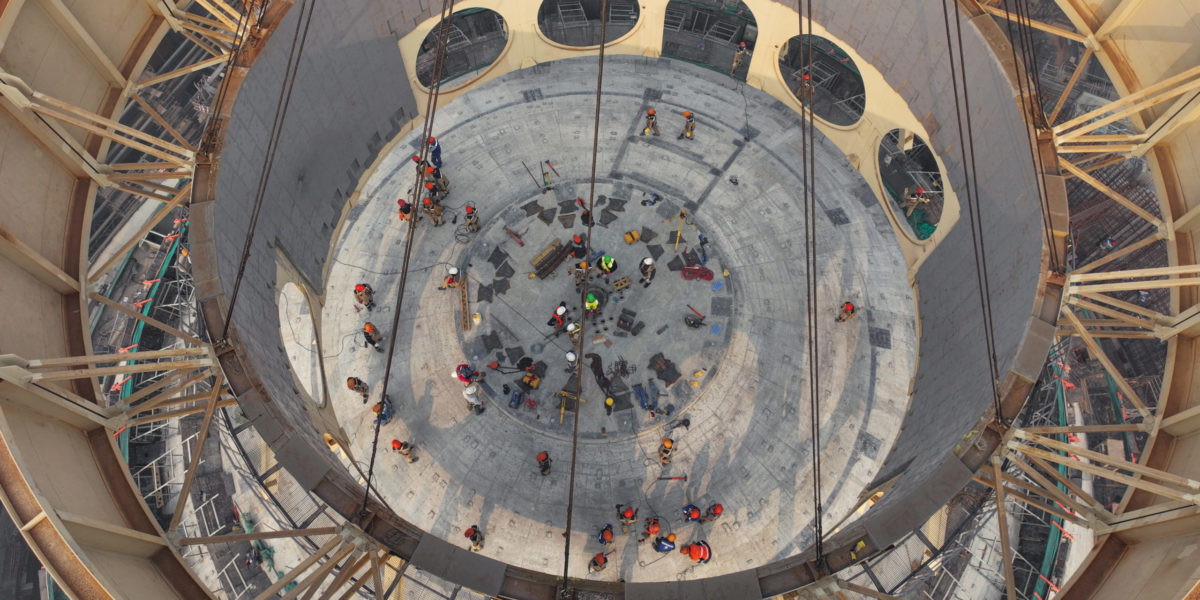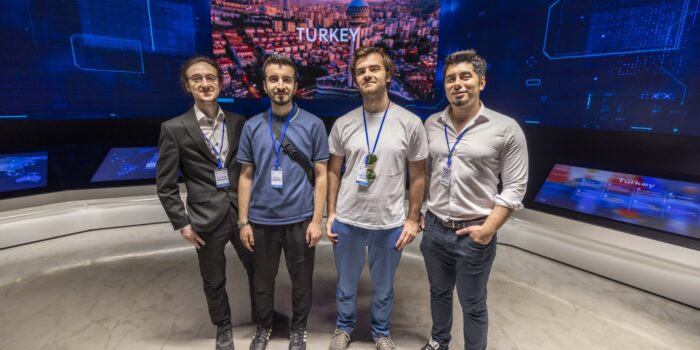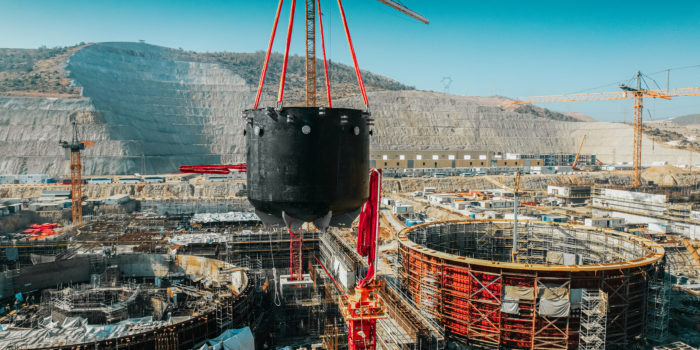Works on installation of inner and outer parts of steel structures of the passive heat removal system (PHRS) deflector in the design position were performed in two days at the Rooppur NPP construction site in the People’s Republic of Bangladesh (the general designer and general contractor being the Rosatom Engineering Division).
The complexity of this two-stage operation was that the maximum allowable deviation during installation of heavy steel structures weighing 135 and 80 tons on spherical surface is 10 mm. The inner and outer parts of the deflector were installed in the design position at elevation +64.5 meters. Now the reactor building is 74.85 meters high. In terms of design, the deflector is a metal cylinder made of stainless steel, with the weight of 215 tons and the diameter about 25.5 meters.
Two lead geodetic engineers, a team of five highly qualified welders and 42 installers of steel structures were engaged in the works.
“Installing two parts of PHRS deflector in the design position in two days is a record. The next step is installation of steel structures of PHRS deflector service platforms and installation of air ducts of the passive heat removal system,” said Alexey Deriy, ASE JSC Vice President – Director of Rooppur NPP construction project.

Reference
The PHRS deflector is an aerodynamic structure designed to augment thrust in the ventilation channel and to increase efficiency of the ventilation system. Operation of the entire system is based on natural circulation rules: the atmospheric air comes into heat exchangers, is heated up, then it rises through air ducts to the outlet header located on top of the dome, and returns to the atmosphere, thus cooling down the reactor compartment. The advantage of passive heat removal system is that it can operate using permanent natural processes, not requiring human interference or a power supply source.
Rooppur NPP equipped with two VVER-1200 reactors of the total 2400 MW capacity is being constructed under the Russian design 160 km from Dhaka, the capital of Bangladesh, in accordance with General Contract dated December 25, 2015. The Russian design with VVER-1200 reactors that had been successfully implemented at two units of Novovoronezh NPP was selected for the first NPP in Bangladesh. This is an evolutionary Generation III+ design which fully complies with all the international safety requirements.
Rosatom Engineering Division unites the leading companies of the nuclear industry, namely: Atomstroyexport JSC (Moscow, Nizhny Novgorod, branch offices in Russia and abroad), Joint Design Institute – Atomenergoproekt JSC (Moscow, Nizhny Novgorod, and St. Petersburg branch offices and design institutes, branch offices in Russia and abroad, R&D branches) and subsidiary construction companies. The Engineering Division ranks first in the world by the order portfolio and the number of NPPs constructed simultaneously across the world. About 80% of the Division’s revenues originate from foreign projects. The Engineering Division implements construction projects for high-power NPPs in Russia and across the world, renders a full range of EPC, EP, EPC(M) services including project management and design activities, and develops Multi-D technologies for the management of complex engineering facilities. The Division relies on the achievements of the Russian nuclear industry and innovative state-of-the-art technologies. https://ase-ec.ru/en/.





